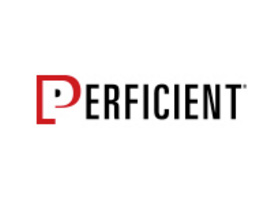Here’s something to be aware of when installing Exchange 2007 into an existing Exchange 2003 environment: once you’ve run /prepareAD /prepareSchema etc., if you previously had no global message size limits, Exchange 2007 will impose a 10MB size limit on all messages. Even before installing the first server role, the schema & AD updates do […]
PointBridge Blogs
Blogs from this Author
The Only Constant is Change: SharePoint Dynamic Master Pages
Summary: SharePoint supports master pages since it is built on top of ASP.NET 2.0 and the master page used by all the publishing pages in any site can be configured allowing, therefore, different master pages per site. Individual publishing pages cannot be configured with their own master page, however. Nonetheless, there are ways to overcome […]
Master Pages/Layouts Security
This one seems obvious but it took me a while to get to it. After a trial migration from SharePoint 2003 to SharePoint 2007 some of the user could not access the site. They were getting permission denied. We looked at all the new SharePoint groups and all the migrated SharePoint groups. Looked at the […]
Using Outlook to Schedule Live Meetings – Anonymous users
Ethan M. brought an interesting point to my attention. He had scheduled a LiveMeeting though Outlook and invited an outside (non-employee) person to the LiveMeeting. When the person tried to join, they got an error message saying "you do not have permission to join the meeting". See the screencap below: Now this was strange because […]
6398, 6482, 7076 in Application Log of SharePoint 2007 Server
Often times on the 32 bit installs of MOSS Enterprise Edition I start seeing event ID 6398, 6482, and 7076. These events appear in the logs about every fifteen minutes and always show up together. The events themselves refer to a job failing usually for Excel Services or the Search Service. Whichever, it points to […]
PKI Enhancements in Windows Server 2008
PKI, or Public Key Infrastructure, is used by many organizations for a variety of purposes including issuing of SSL certificates, smart cards, encrypted file system (EFS) certificates, and authentication. With each release of the server OS, Microsoft has made major improvements to the Certificate Authority. Windows Server 2008 is no different, and has some major […]
Windows Server 2008 Group Policy
I’d like to cover some of the new features in Windows Server 2008. Since Vista and WS2008 share the same code base, many of the enhancements are across both platforms. Features available now in Vista include: -The GPO engine service is hardened and more reliable -800 more policy settings (I’ll talk later about finding specific […]
Use hierarchies to organize your content types
I’ve mentioned before that Content Types are much like classes in object oriented programming. While content types are not truly classes, there is a form of inheritance that occurs between a parent content type and its children. When you add a parent content type id in your content type id, your content type will inherit […]
Preparing an iSCSI Enterprise Target VM Appliance for MS Clustering on VMWare Workstation 6
Information is provided as is. Not intended for production use. Lab use only! Introduction With the latest incarnation of the VMWare Workstation product, I found myself scrambling to find another solution to represent a Windows 2003 cluster on my laptop. I did some research and tested different suggestions others had tried but with no success. […]
OCS and the A/V service
After a bit of trial and error, and some help from PSS, we at PointBridge now have a fully function Office Communication Server 2007 environment! The implementation went quite well, with the exception of one spot: getting audio and video conferencing to work with external users. For some reason, we couldn’t have LiveMeeting 2007 bridge […]
5 Things you should know about Content Type IDs
When creating content types and building out their hierarchies in your site, the content type id is an item that will always require a little extra care and attention. Rather than being a simple identifier like all other components in SharePoint (i.e., Feature Id, Solution Id, Field Id) the content type id contains hierarchy logic […]
Features should depend on each other and work together
While putting content types into their own features and using a solution to deploy them makes deployment much easier, you can get into a quagmire in a hurry as the number of content types grow in your solution. I recently worked on a solution that contained over a hundred content types. The site collection features […]
